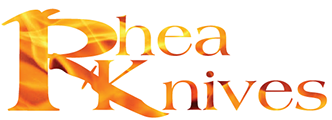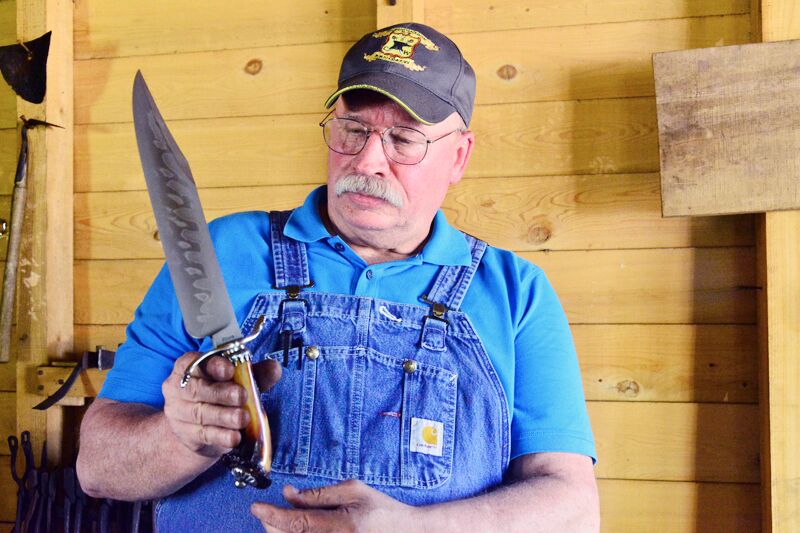“That is real art”. These are words that most makers hear from time to time. The ranks of the ABS hold some wonderful artists, some of which I can only hope to imitate at some time in the future. The limit seems to be unreached even yet, because of what I see every time I check the various knife publications and forums.
Even considering the pool of talent in our organization, some makers stand out. It’s not that they make the most complicated knives or the fact that they can turn out work that is of such a high standard in fit, finish. The amazing thing to me is that they do this consistently. Rarely will you see them turn out what amounts to a flop, a dud, or a boat anchor as some of us affectionately refer to a clumsy effort at translating mental image into material object.
No, you can be sure that, as a rule, it is just not going to happen to one of this upper tier of makers. Their success is largely due to their consistency. So to you who may be relatively new in the knife making community, especially if you feel you ratio of boat anchor to art work is higher than you like, I would make a recommendation. Draw your work. I will try to explain what I mean.
As I mentioned, knife makers are often called artists and as such it might imply a certain measure of abstraction. In some cases abstract expression might work well for a maker whose primary intention is to express his or her artistic endeavor. This can range all the way from clever design to an object not to be recognized as a knife. I would venture to say, though, that for some of us the way a knife fits the hand is more important than perhaps what artistic impression it might leave on someone. Even makers who adopt this somewhat simplistic approach can consistently produce some amazing works of “art”, because after all, the concept itself is fleeting and very much a matter of interpretation. So, we will concentrate more on the practical aspects of knife making and not get bogged down in a discussion on art.
One thing that I have noticed about experienced makers is that they sketch out there knife projects before ever starting it. In my opinion, this is a major step in the right direction, one of consistently turning out end products that formerly were only seen in their mind’s eye. The drawings can be very exact and of great detail. There are those who might feel like this is hinders their artist flow…….or something. They would rather go to their forge and just heat the steel and let the creative juices take over. That is great sometimes, but from experience I can say, it generally does not produce my best work. Think about it like this. If you were going to travel to a specific destination you would probably map it out and take a preferred route, instead of just getting in your car and driving in the general direction hoping to end up at your destination. At times, “my destination” may be a Joseph Rogers reproduction Bowie and I can’t get it done to satisfaction with meandering methods. I can say this. When I draw and refer to my drawing in the process of construction, my knives turn out much better.
Let’s just say that we are in agreement that drawing our knives in detail before ever forging the blade will consistently improve the final results. OK, how do we go about using the drawing? I have figured out a few little tricks that make using a drawing almost fool proof. I would start by recommending purchasing a high end drawing pad. I like a 14 X 17 inch size. The better ones have a more durable binding and wont fall apart on you and this will be important for more than the obvious reason. You drawings will improve your work, thus increasing the likelihood that you will want to repeat that knife later. A good quality drawing pad will be there when you decide to do that. Information about the knife such as notes, model name, variation, specifics on materials, dates, customer names, etc. can be noted on the drawings and available for future reference. Who knows, your children may really appreciate having your drawing pad one day, even with coffee stains, so please spend a few extra dollars and get a good one.
I like to have a few drawing tools to speed up the process and make the details a little more precise. Things like mechanical pencils, templates, French curve, etc. These tools are easily obtainable from your local hobby or drafting supply. A good eraser is a must, because you can make your changes and corrections much easier on paper than in steel. You will be surprised at how very slight tweak in a curve or a line can make a knife look so much better. This realization is a big step in developing your “eye”, the one you use to judge the end product while yet still on paper.
Insert Photo#1 with caption about hereà
After you get your drawing finalized and you’re ready now to go to the shop and forge the blade, it can be somewhat awkward to compare a hot steel blade to a paper drawing. So I make a pattern, first by laying a piece of clear Plexiglas onto the drawing and trace the blade, tang and all, onto the Plexiglas using a felt marker. I cut and grind this to shape, then use it to trace onto 1/8 inch aluminum plate. After I get the aluminum pattern cut and ground, I go back to my drawing and tweak the pattern till I’m satisfied it is as close as I can get it. This aluminum pattern is the one I use as a template while forging my blade. After forging and during the grinding stages, I refer to this pattern often, actually holding the aluminum pattern over the steel blade, till its profile is a copy of the pattern. To be certain all is well, I then lay the then cool blade onto the actual drawing to see if every detail lines up and works with the handle, guard, pins, etc. I can use this principle throughout each step of the knife’s construction. Save your patterns for later use. I stamp my maker’s mark on the pattern just like I do my blades so they won’t get mixed up with someone else’s.
The method of using patterns is especially helpful when making a frame handled knife. A lot of Early American and English style knives are unique in construction and you have to know where you are going when you start down that road. Mapping out your route will get you there in good fashion.
Insert Photo #’s 2 & 3 with captions about here à
So, what we are actually discussing is a means of translating our mental image into the physical object. While this image is still in the mind is where we have the freedom to express our artistic self with the goal of capturing that image, in our case in the form of a drawing, and in turn, apply the methods, step by step using patterns, to achieve the necessary amount of precision for its production. The degree of predictability this will add to your work is very satisfying and your resulting improvement will be noticeable immediately by yourself and others.


Recent Comments